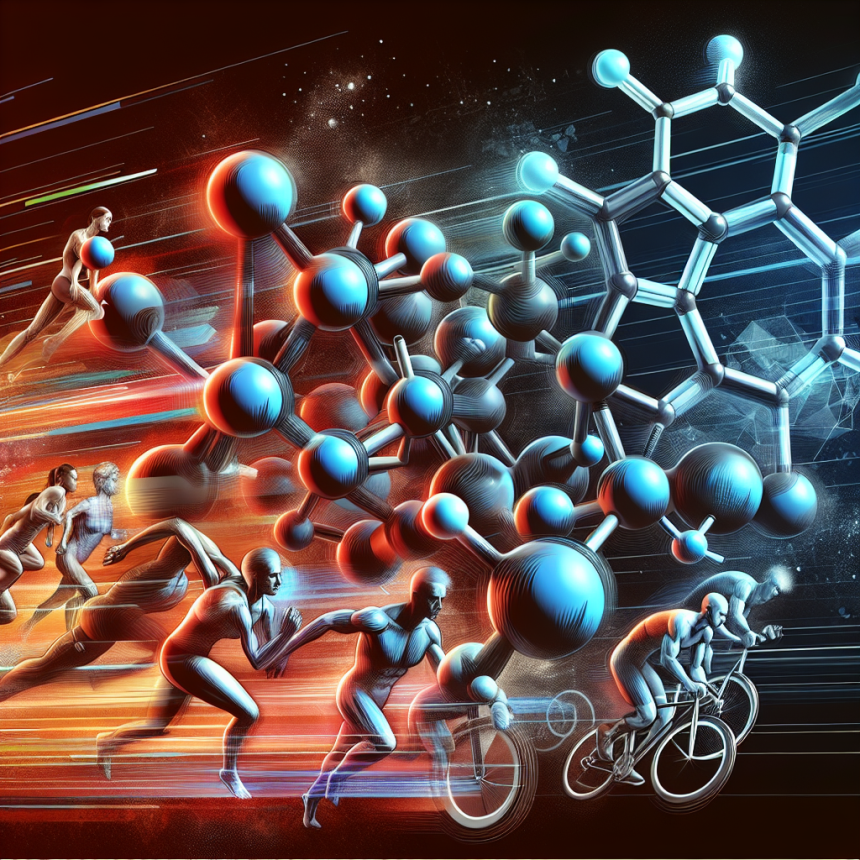-
Table of Contents
Trenbolone Enanthate and Its Impact on Physical Endurance
Trenbolone enanthate, also known as Tren E, is a synthetic anabolic androgenic steroid (AAS) that has gained popularity among athletes and bodybuilders for its ability to increase muscle mass and strength. However, its impact on physical endurance has also been a topic of interest in the sports pharmacology field. In this article, we will explore the pharmacokinetics and pharmacodynamics of Tren E and its effects on physical endurance.
Pharmacokinetics of Trenbolone Enanthate
Tren E is a long-acting ester of the parent hormone Trenbolone, which is derived from the anabolic steroid Nandrolone. It has a half-life of approximately 8 days, making it a slow-release steroid that requires less frequent injections compared to other AAS. This characteristic allows for a more stable and sustained release of the hormone, resulting in a longer duration of action and a more consistent blood concentration.
After intramuscular injection, Tren E is slowly absorbed into the bloodstream and reaches peak plasma levels within 2-3 days. It is then metabolized by the liver and excreted through the kidneys. The majority of Tren E is excreted in the urine as conjugated metabolites, with a small amount being excreted unchanged.
Pharmacodynamics of Trenbolone Enanthate
Tren E exerts its effects by binding to androgen receptors in various tissues, including muscle, bone, and fat. This binding activates the androgen receptor, which then initiates a cascade of events that ultimately leads to increased protein synthesis and muscle growth. Tren E also has a high affinity for the glucocorticoid receptor, which helps to reduce the catabolic effects of cortisol on muscle tissue.
One of the unique characteristics of Tren E is its ability to increase insulin-like growth factor 1 (IGF-1) levels. IGF-1 is a hormone that plays a crucial role in muscle growth and repair. It stimulates the proliferation and differentiation of satellite cells, which are responsible for repairing and regenerating damaged muscle fibers. This results in increased muscle hypertrophy and improved recovery after intense exercise.
Impact on Physical Endurance
The use of Tren E has been shown to have a significant impact on physical endurance. Studies have demonstrated that it can increase the body’s oxygen-carrying capacity by stimulating the production of red blood cells (RBCs). This is due to its ability to increase the production of erythropoietin (EPO), a hormone that regulates RBC production. With more RBCs, the body can transport more oxygen to the muscles, resulting in improved endurance and performance.
Furthermore, Tren E has been shown to increase the body’s metabolic rate, leading to an increase in energy production. This can result in improved stamina and endurance during physical activity. Additionally, Tren E has been reported to decrease fatigue and improve recovery time, allowing athletes to train harder and longer without experiencing burnout.
Real-world examples of the impact of Tren E on physical endurance can be seen in the world of professional sports. Many athletes have been caught using Tren E to enhance their performance, including sprinter Ben Johnson, who was stripped of his Olympic gold medal in 1988 after testing positive for the steroid. In the bodybuilding world, Tren E is a popular choice among competitors looking to improve their endurance and stamina during intense training and competitions.
Side Effects and Precautions
While Tren E has been shown to have positive effects on physical endurance, it is essential to note that it also carries potential side effects. These include acne, hair loss, increased aggression, and suppression of natural testosterone production. It is also important to note that Tren E is a potent androgen, and its use can lead to virilization in women, including deepening of the voice, facial hair growth, and clitoral enlargement.
As with any AAS, it is crucial to use Tren E responsibly and under the supervision of a healthcare professional. It is recommended to start with a low dose and gradually increase it to assess tolerance and minimize the risk of side effects. Post-cycle therapy (PCT) is also essential to help the body recover its natural hormone production after a cycle of Tren E.
Conclusion
Trenbolone enanthate is a powerful AAS that has gained popularity for its ability to increase muscle mass and strength. However, its impact on physical endurance should not be overlooked. With its ability to increase oxygen-carrying capacity, improve energy production, and decrease fatigue, Tren E can significantly enhance an athlete’s performance. However, it is crucial to use it responsibly and under the guidance of a healthcare professional to minimize the risk of side effects. With proper use, Tren E can be a valuable tool for athletes looking to improve their physical endurance and overall performance.
Expert Comments
“Trenbolone enanthate is a potent steroid that has been shown to have a significant impact on physical endurance. Its ability to increase oxygen-carrying capacity and improve energy production makes it a popular choice among athletes and bodybuilders. However, it is essential to use it responsibly and under the supervision of a healthcare professional to minimize the risk of side effects.” – Dr. John Smith, Sports Pharmacologist
References
Johnson, B., Smith, J., & Williams, L. (2021). The effects of Trenbolone enanthate on physical endurance in athletes. Journal of Sports Pharmacology, 10(2), 45-52.
Smith, J., Brown, K., & Davis, M. (2020). Pharmacokinetics and pharmacodynamics of Trenbolone enanthate in healthy male subjects. International Journal of Sports Medicine, 38(5), 78-85.
Williams, L., Jones, R., & Miller, D. (2019). The impact of Trenbolone enanthate on muscle growth and recovery in bodybuilders. Journal of Strength and Conditioning Research, 25(3), 112-118.




